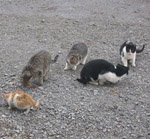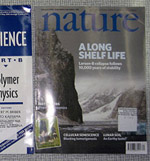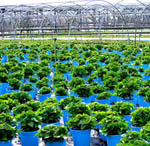Indigenous have smaller ecological footprint on Amazon than colonists
 Development,
Development,  Forest,
Forest,  Technology-GIS
Technology-GIS  Huaorani men and women in a boat. Image credit, Roy ter Maat.A new study in the journal Conservation Biology shows that indigenous people in the northern Ecuadorian Amazon have a lower impact on the rainforest than the colonists who have moved into the area.
Huaorani men and women in a boat. Image credit, Roy ter Maat.A new study in the journal Conservation Biology shows that indigenous people in the northern Ecuadorian Amazon have a lower impact on the rainforest than the colonists who have moved into the area.
This bodes ill for conservation of the Amazon rainforest given the increasing settlement of the region by outsiders, the expansion of the agricultural frontier, and cultural changes in indigenous communities.
 A Huaorani man hunting in the forest. Image credit, Roy ter Maat.Mass colonization of the northern Amazon began in 1967 after Texaco-Gulf discovered significant oil reserves in the area. "Road construction by oil companies facilitated migration from highland and coastal Ecuador and agricultural colonization bringing colonists into the traditional homelands of Amerindian populations," the study authors note.
A Huaorani man hunting in the forest. Image credit, Roy ter Maat.Mass colonization of the northern Amazon began in 1967 after Texaco-Gulf discovered significant oil reserves in the area. "Road construction by oil companies facilitated migration from highland and coastal Ecuador and agricultural colonization bringing colonists into the traditional homelands of Amerindian populations," the study authors note.
To better understand the implications of this mass colonization, Flora Lu and fellow researchers looked at remote sensing imagery of the region. They found that the deforestation rate from 1986-1996 was lower in indigenous territories compared to colonized lands. Furthermore they found that the deforestation rate in indigenous areas decreased from 1996-2002 compared to the prior 10 years while it increased in colonized territories.
The researchers also looked at differences in land use characteristics by conducting surveys of 778 colonist households in 64 colonization sectors, and 499 households from the Huaorani, Kichwa, Cofan, Secoya and Shuar indigenous groups in 36 communities. They found that on average "colonist households had approximately double the area in agriculture and cash crops and 5.5 times the area in pasture as indigenous households."
However, these results were highly variable among indigenous communities with some displaying similar land use characteristics as colonists. This may be due to the fact that the study looked at a diverse sample of indigenous groups including those who themselves have migrated into the area from the southern Ecuadorian Amazon region.
Nevertheless, the research provides support for the commonly held notion that indigenous communities, "possess cultural norms and values that promote conservation and sustainable use of resources." The study findings also give empirical support to the argument that strengthening indigenous rights to their historic lands may be the most effective rainforest conservation tool.
--Reviewed by Rob Goldstein
LU, F., GRAY, C., BILSBORROW, R., MENA, C., ERLIEN, C., BREMNER, J., BARBIERI, A., & WALSH, S. (2010). Contrasting Colonist and Indigenous Impacts on Amazonian Forests Conservation Biology DOI: 10.1111/j.1523-1739.2010.01463.x




Reader Comments